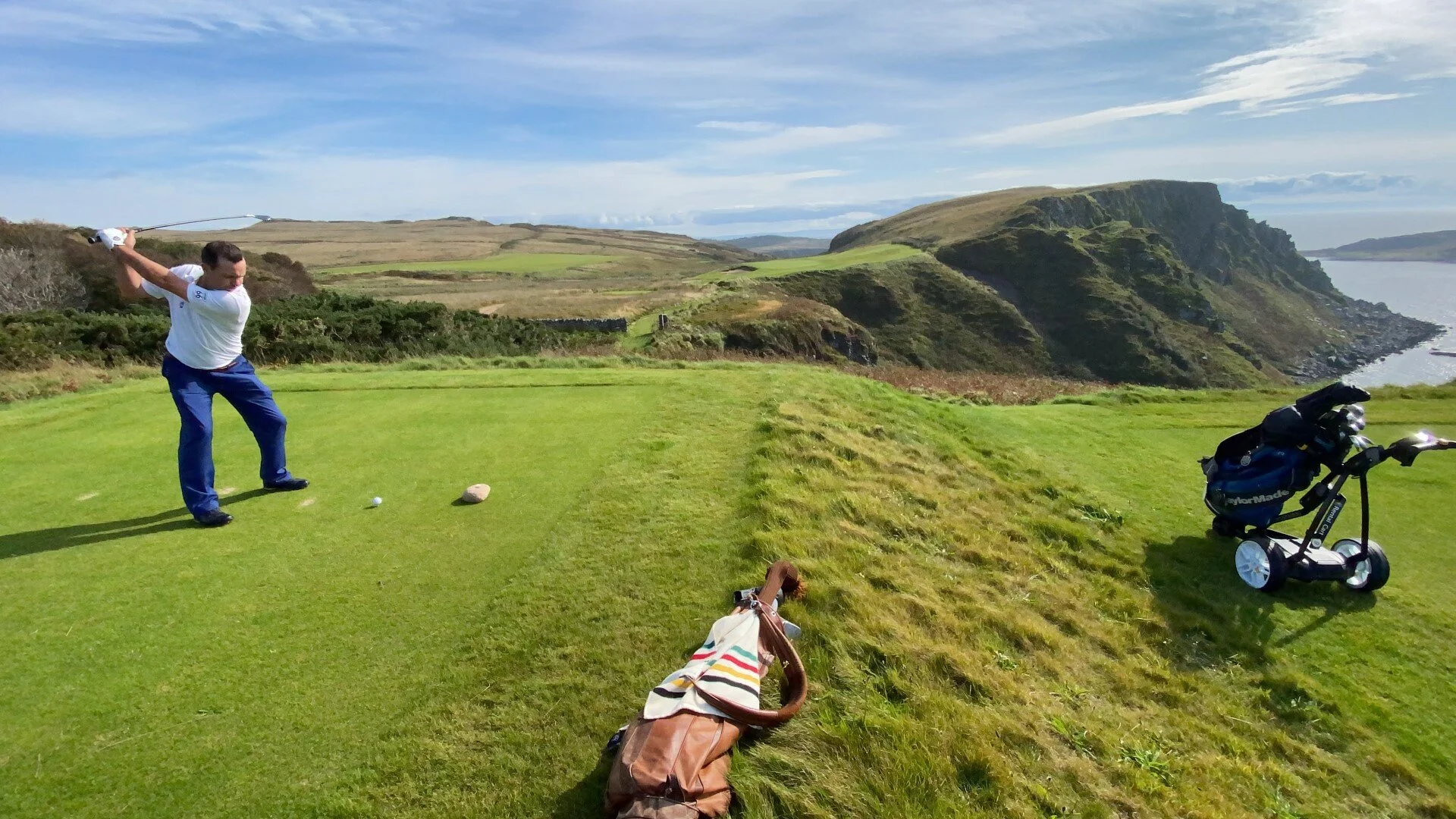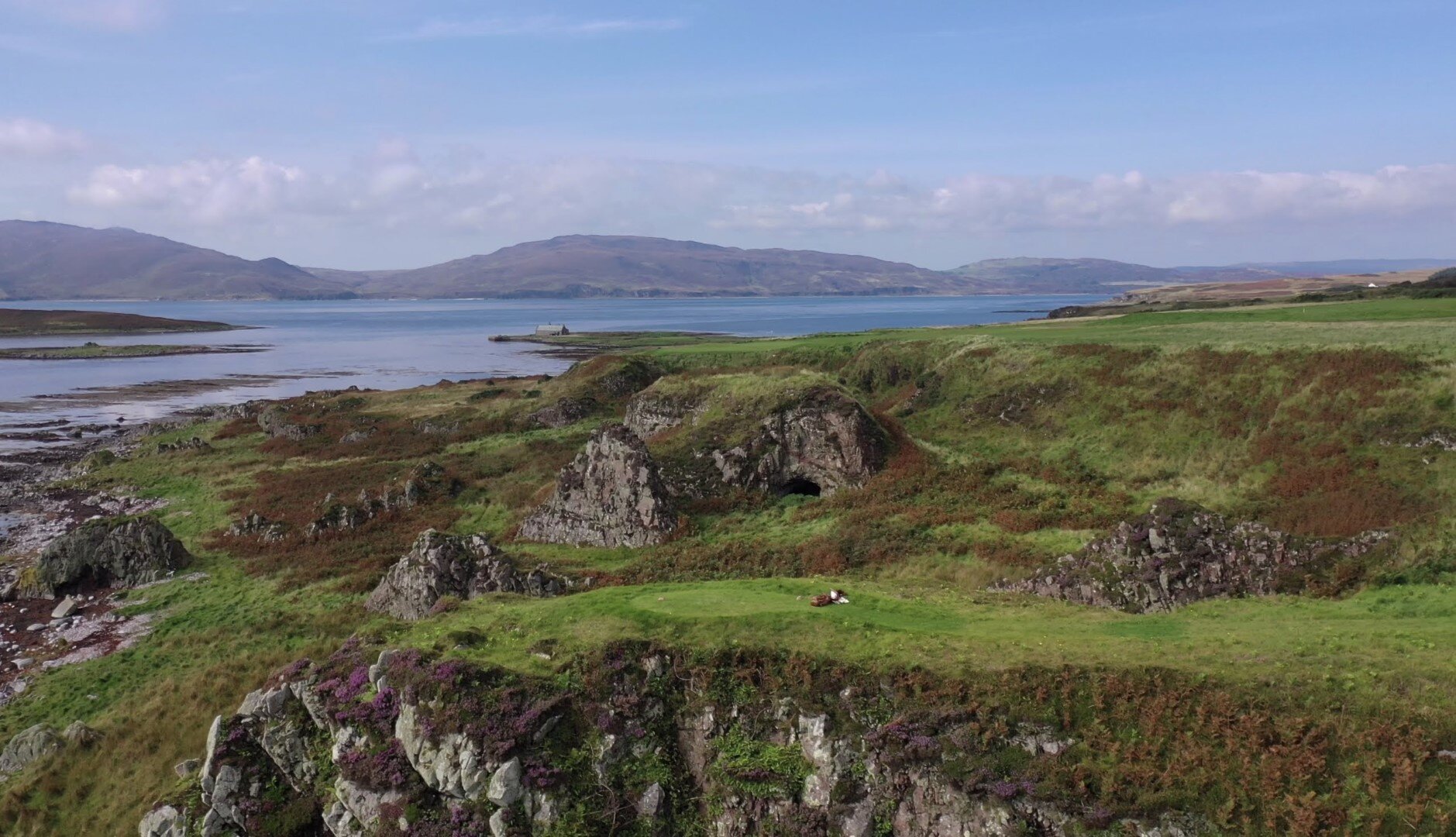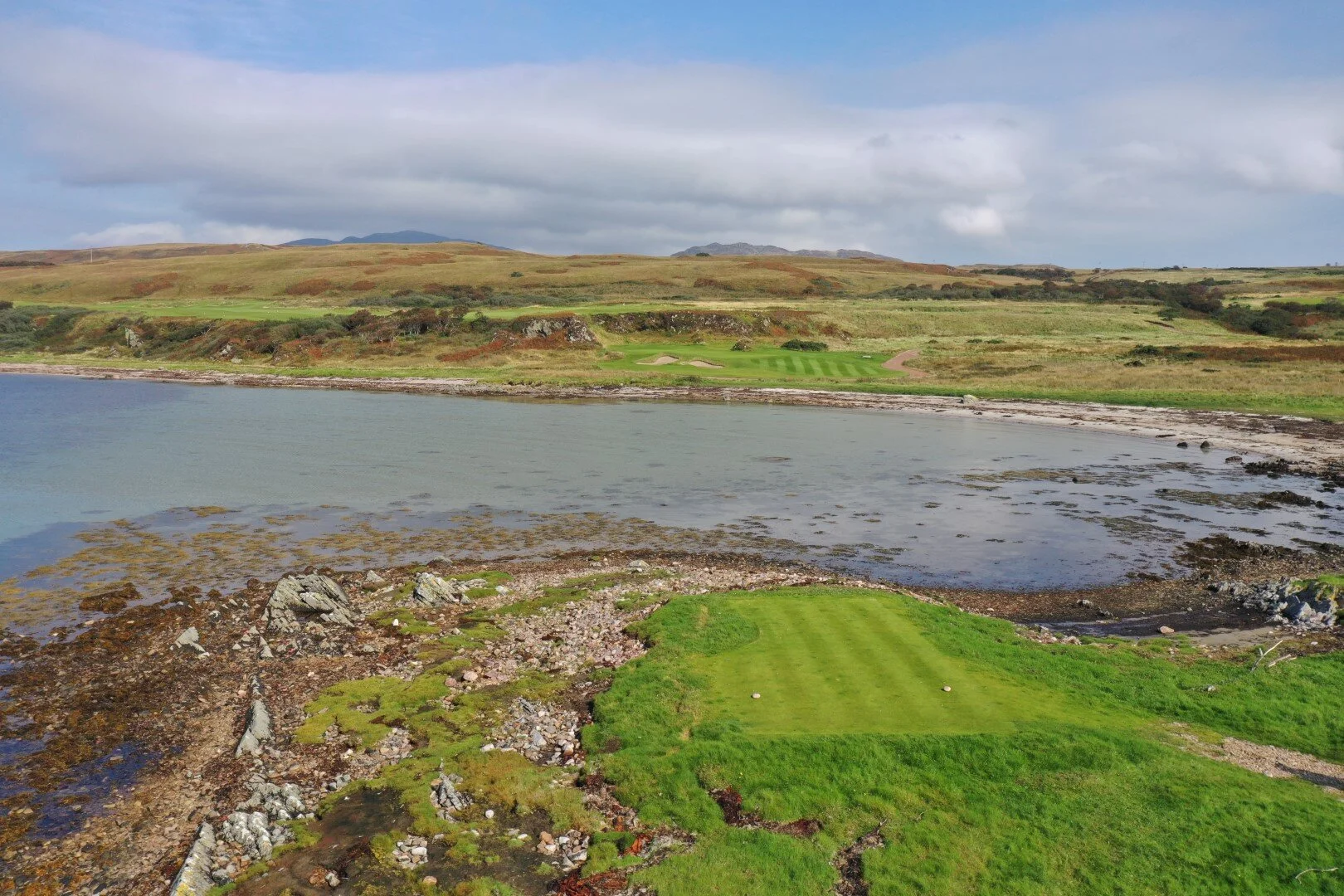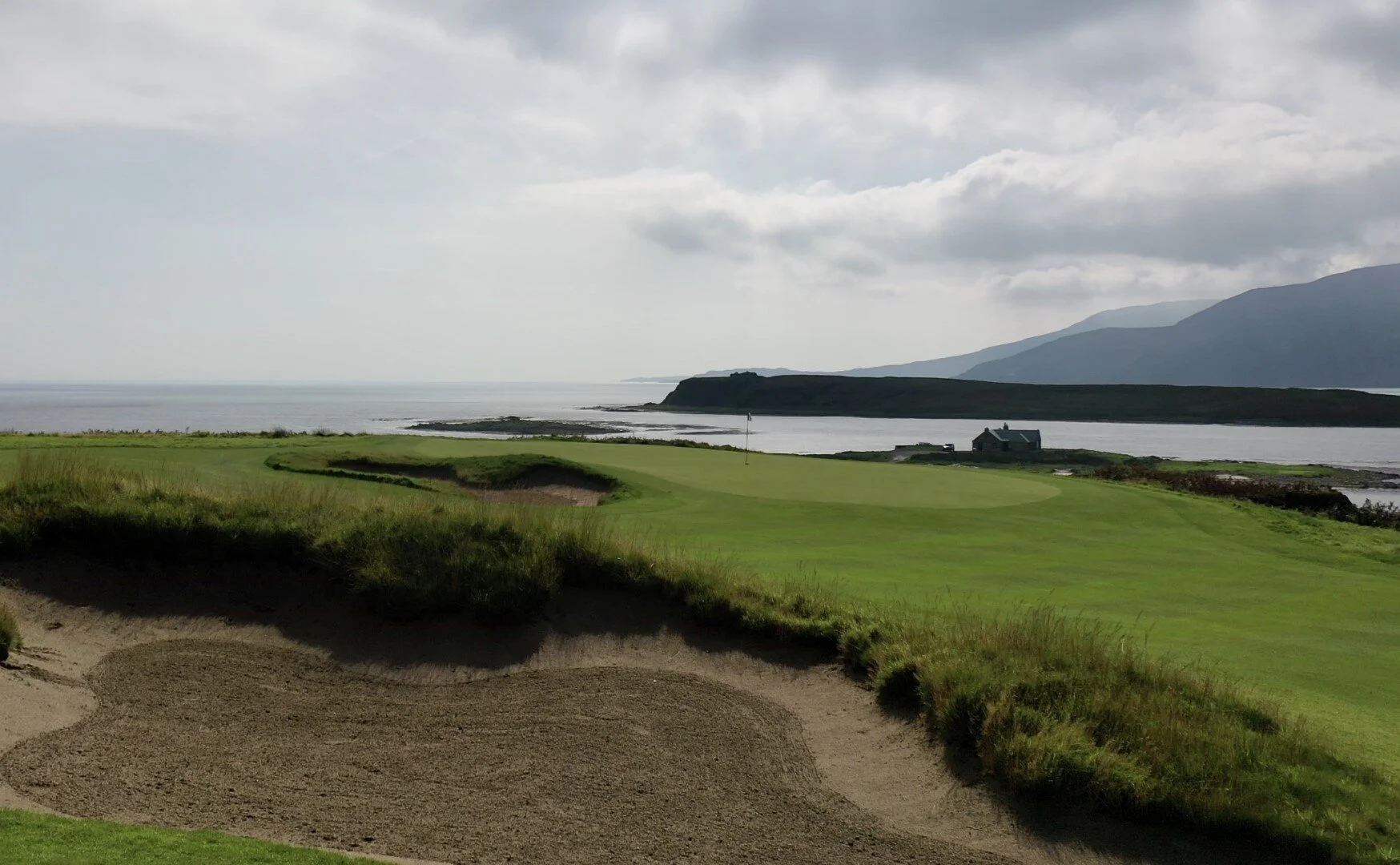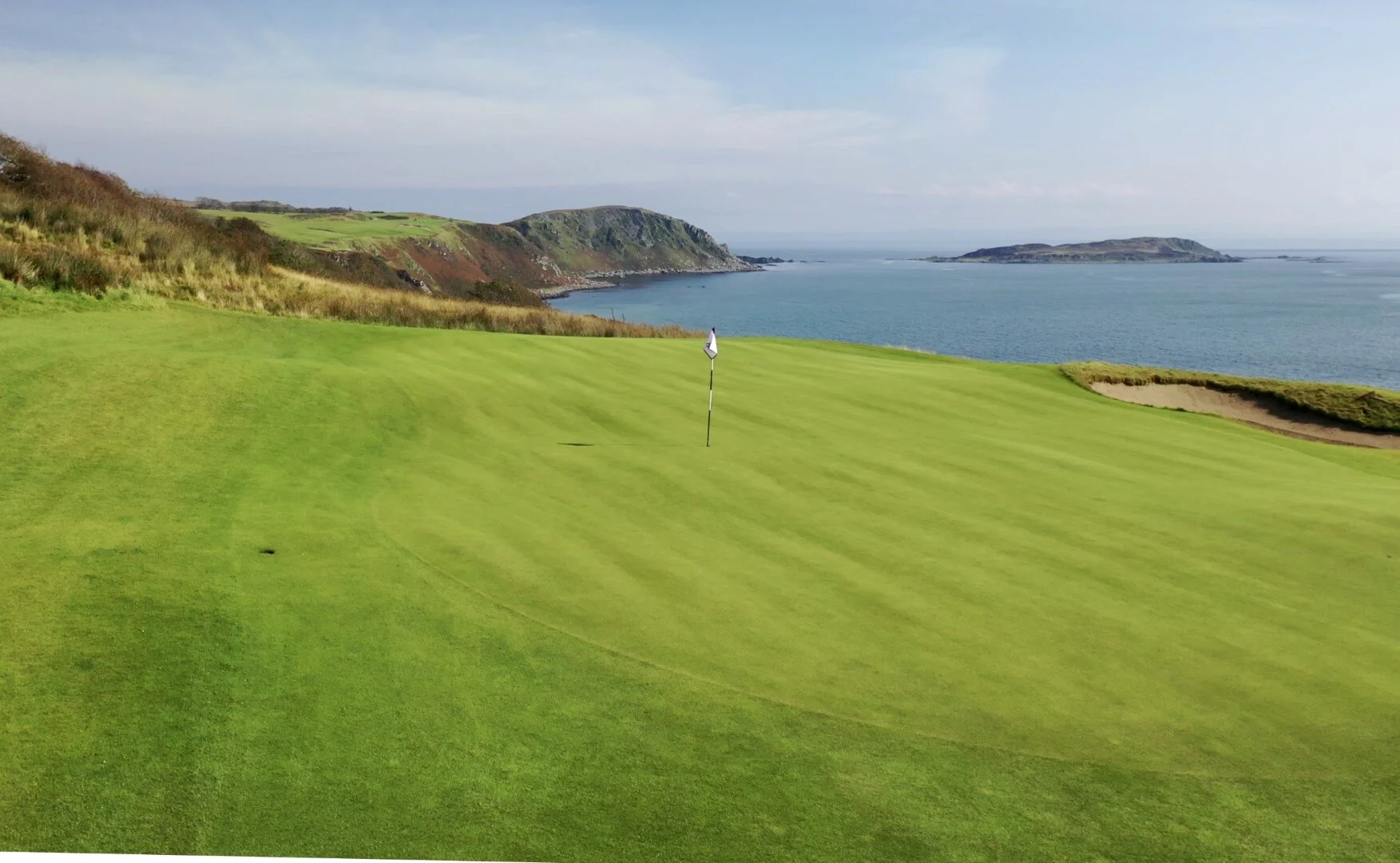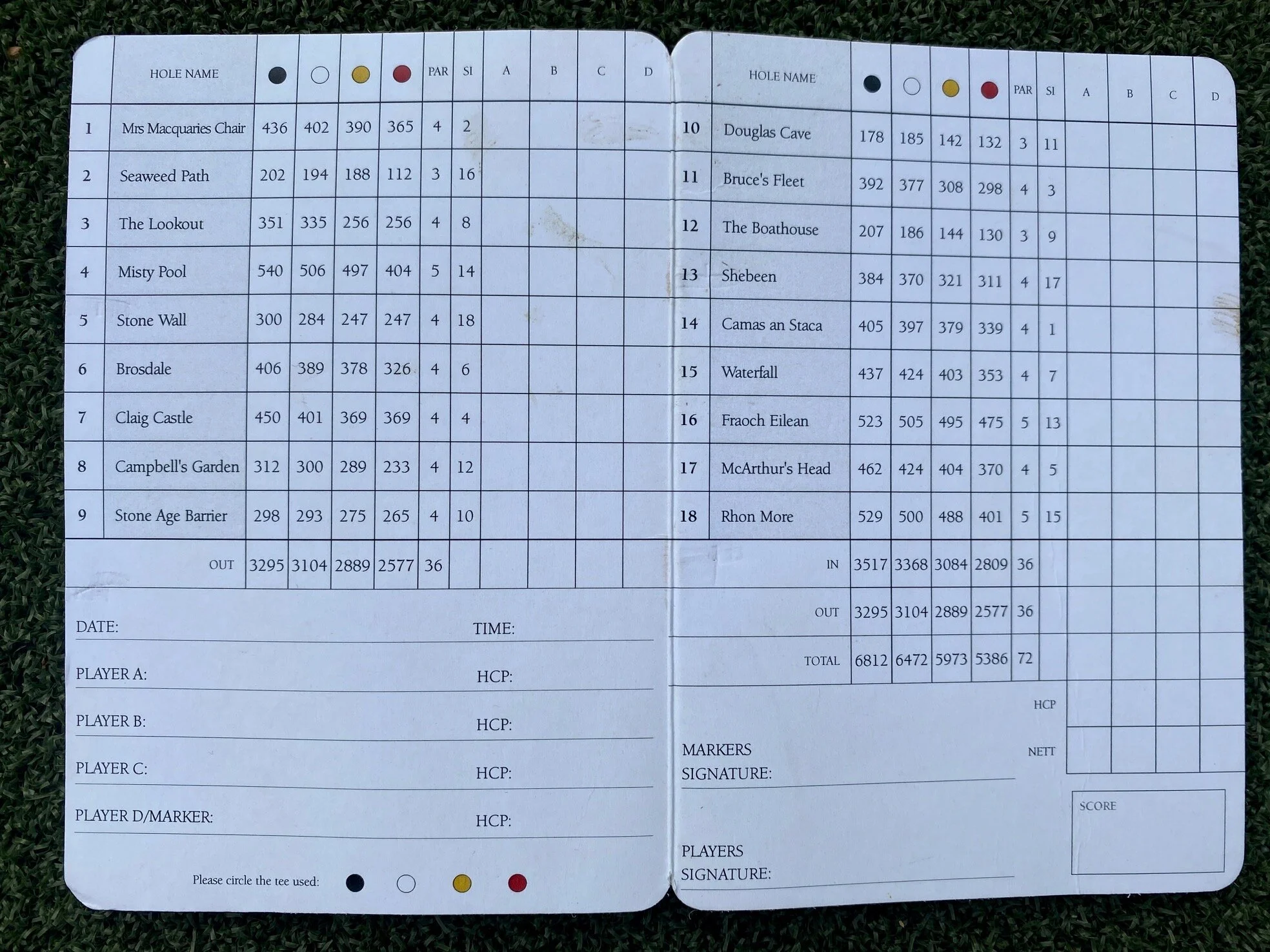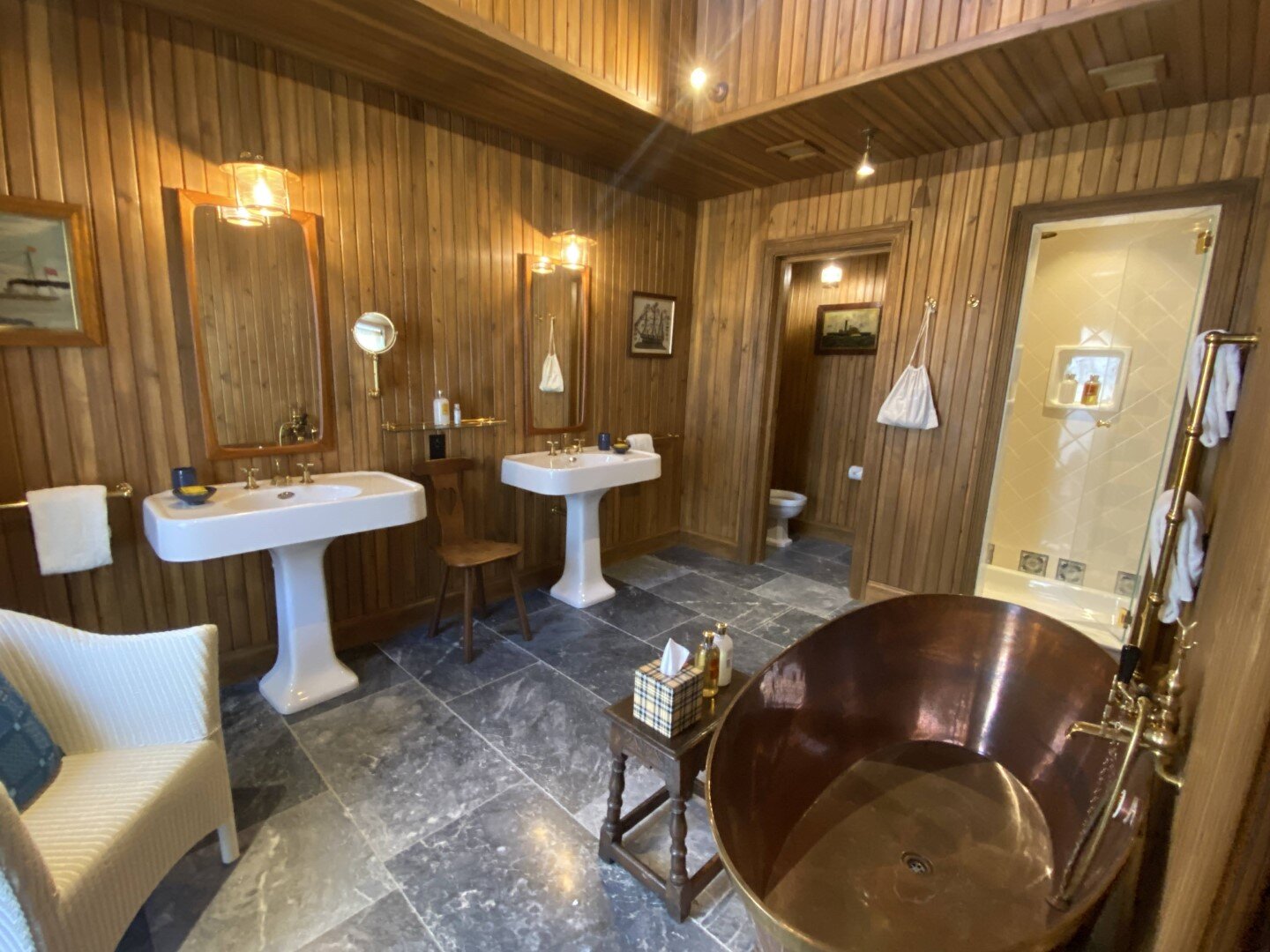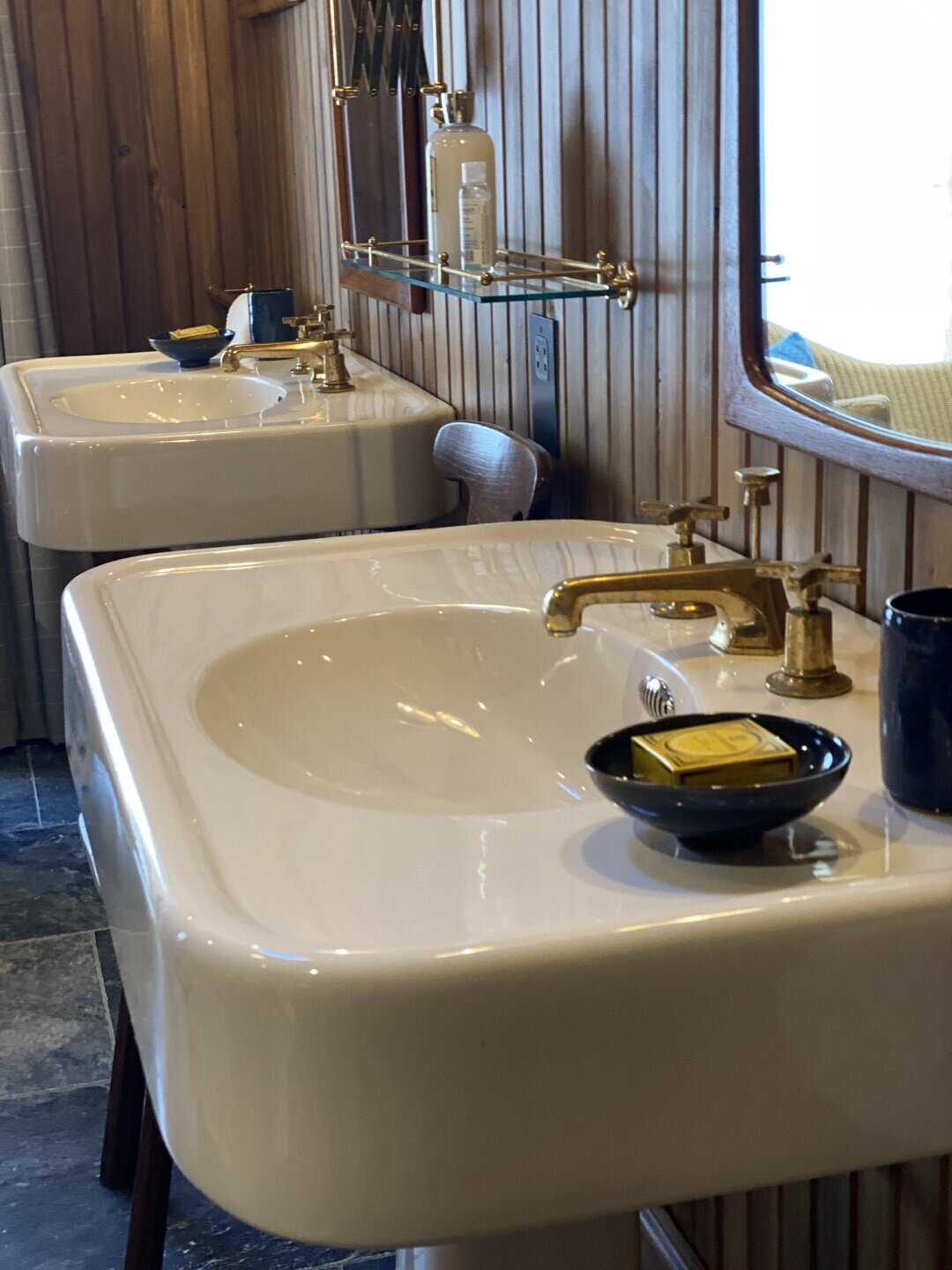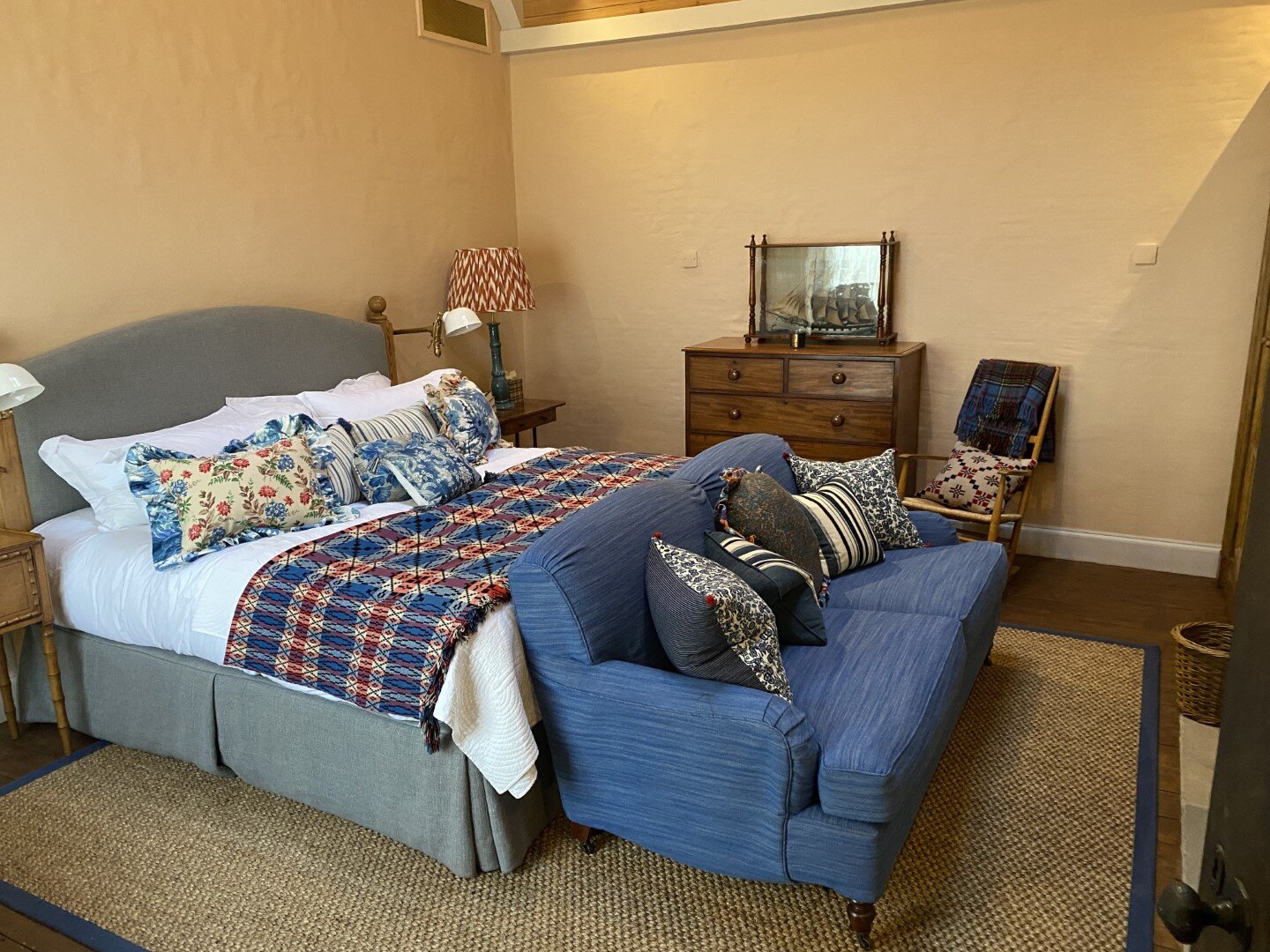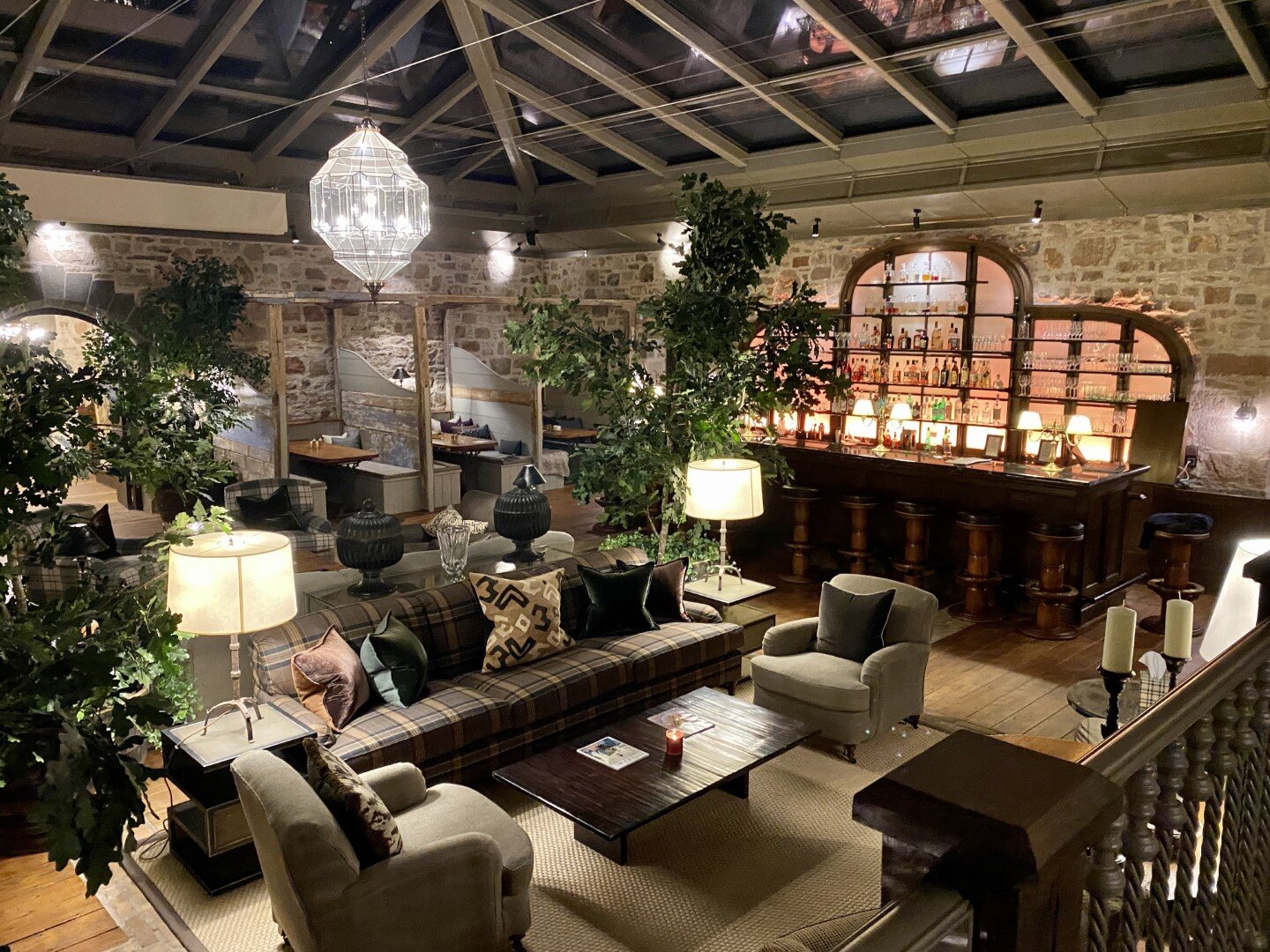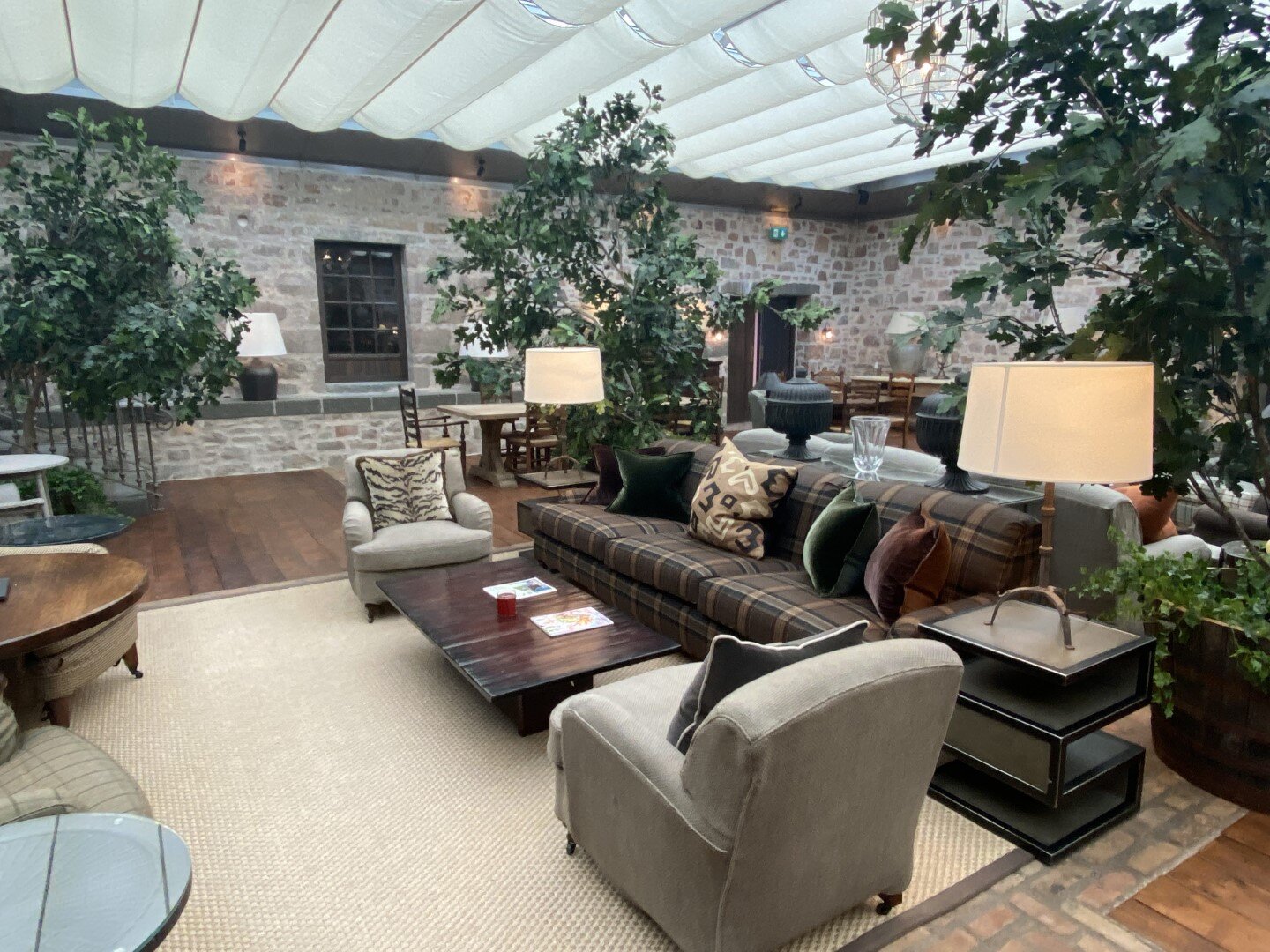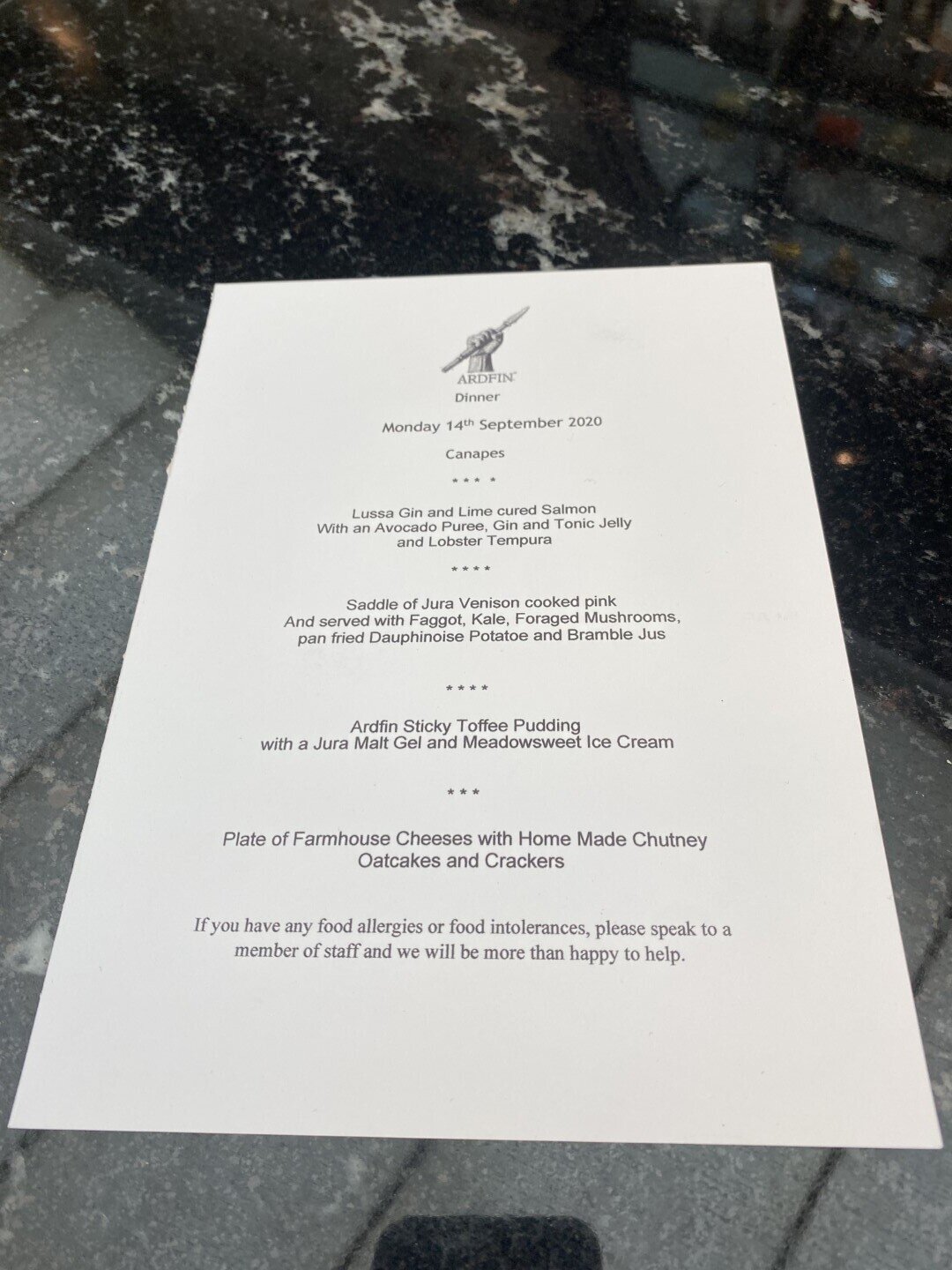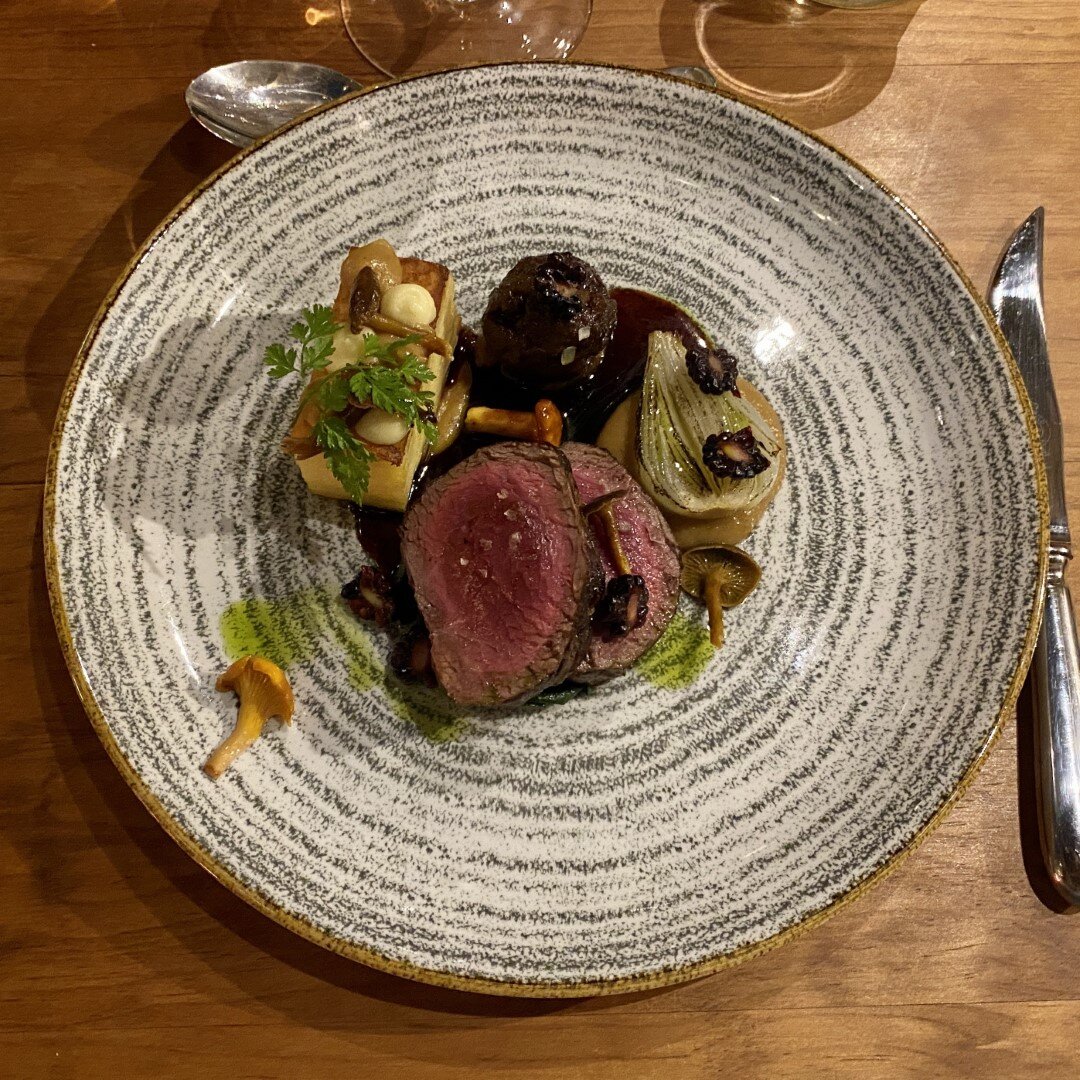ARDFIN - 18 POINTS
It’s safe to say that anyone who goes to Ardfin will never forget it.
It isn’t an easy place to get to. The course is on the southern tip of Jura, a Hebridean island off the west coast of Scotland and it will take a long drive and at least one boat to get there. When you finally arrive, you are greeted by one of the most dramatic coastlines in Scotland.
Building a golf course here would have been virtually impossible until recently - it isn’t sandy, traditional Scottish links, terrain. Rather, it is built on a rocky outcrop and it must have taken incredible vision to conceive of it as a golf course. That vision came from an Australian duo.
The Ardfin estate was purchased by the antipodean multi-millionaire Greg Coffey. He wanted to build a golf course to play with his friends and family in his retirement. He made a phone-call to the Australian architect, Bob Harrison, who had created Ellerston - another millionaire’s retreat.
After checking one of his friends wasn’t winding him up, Harrison flew to Jura to look at the opportunity. To hear more about what he found, how he went about designing and building the course and the challenges he faced, I would encourage you to listen to the interview with him in the excellent ‘The Thing About Golf’ podcast.
The course opened in 2015, but only a handful of golfers have seen Ardfin. Stories emerged of luxury accommodation and breathtaking holes; but it was unknown whether those outside of Coffey’s immediate circle would ever be able to play the course. However, in early 2020 it was announced that the course would be open to visitors – but only for those willing to pay stay on the property. I cover the logistics, accommodation and overall package in the Tour Tips section below.
But if you strip away the myths, strip away the cost and strip away the exclusivity, what is the course itself actually like?
I arrived on a sunny September day with little wind and no rain in the forecast. This wasn’t achieved completely by luck - I had booked my trip at short notice, having seen a positive weather forecast. I suspect that the weather and conditions will play more of a part in your trip to Ardfin than at virtually any other course in the world. The west coast of Scotland can take the brunt of any weather coming across from the Atlantic. So, you could easily be unlucky and need to keep the waterproofs on for the whole time.
I played the course twice. For the first round, the course manager, Simon Crawford, accompanied me which was really helpful. He was able to point me in the right direction, talk to me about how the course had developed since opening and generally help to ensure I had a good time. This red carpet treatment is something they are keen to offer to all visitors to the course for their first round. Everyone I met at Arfin was incredibly friendly and keen to make sure I got the most out of my stay. This isn’t a stuffy place, you can relax and enjoy an incredible level of hospitality without feeling you need to be walking on eggshells.
The course definitely benefits from multiple plays. It is impossible not to be nervous facing this course for the first time – in many ways it reminded me of Pine Valley in that you can stand on the tee wondering how you are going to play a hole, but the second time round you realise where the width and lines to play really are.
The course is split into three acts. The first seven holes are to the east of the estate House and play down to the sound. Then you cross to the west of Jura House and play seven holes along the shoreline, with a final four up the hill.
As always, I would advise you pick your tees carefully. Simon advised we mix up the back tees and the set one forward. There actually aren’t too many long carries from the tee, trouble is more likely to be on either side of the hole. Likewise, there aren’t too many blind shots from the tee or for your approach shots.
Given that Ardfin is a pretty unknown course I’m going to give a hole-by-hole description. I hope it gives you a good taste of what to expect if you ever get there. At the end of this review there’s also a hole-by-hole video I shot with a drone on my visit.
The course is being constantly developed and one recent addition is a putting green which runs straight onto the back tee on the 1st hole - the thrill factor is immediately high! A par 4, the 1st is a microcosm of the rest of the course. You will be blown away by the setting and the views but you need to concentrate fully on the golf at hand. You simply cannot afford to miss the short grass at Ardfin. Few of the fairways are penally narrow, but you need to be on or very close to them. You can be just a few feet off the fairway and very lucky to find you ball. Sometimes it is in long grass, sometimes heather or, sometimes, off the slide of a cliff!
The 1st hole at Ardfin sets the standard for what’s to come
The second shot up to the 1st requires you to carry a burn short of the green, avoid going over a wall to the right, and stay out of scrub on the left. Are you seeing a theme here? Accuracy is key. Having said that, if you don’t trust yourself to hit a long iron with the accuracy required, study your strokesaver carefully. Lay-ups are possible on most holes, and essential to score half-decently. You just need to think about what you are trying to do rather than be distracted by the stunning views.
The greens at Ardfin are generally on the small side and, while there is movement, there aren’t any crazy slopes to leave you scratching your head. They are unlikely to be too fast either given their exposure to the elements.
The 2nd hole is the first par 3 hole on the course. There are only three short holes but each of them is stunning. Such is the quality that I couldn’t say which is the best. The hole is 200 yards long but the carry is a mere 150. Into the wind though, knowing that anything pushed to the right will end up on the beach, the intimidation factor is high. It’s visually stunning and is a simply exhilarating hole.
The second is the first of three stunning par 3 holes at Ardfin
The 3rd is another which gives a good clue of what is to come. From the white tee it’s only 335 yards but, if you pull a driver, you need to have unerring accuracy. The angled fairway is narrow, and tightens further the closer you get to the green with a burn on both sides. If you can get a long way down, rather than lay up, you will have a big advantage - you would much rather go into the green with a short iron. A longer one risks going through into the burn at the back as I did.
Accuracy off the tee is at a premium on the 3rd
The par 5 4th hole is fairly generous off the tee, but length is important as you will need to precisely carry a wetland with your second shot to avoid the centre-line bunkers and get a good line into the shallow and heavily contoured green.
The 5th and 6th holes share a massive fairway, a hundred yards wide – think first-hole-at-St-Andrews width. For the better line into the short 5th you will want to stay closer to the wall on the right. The only real challenge off this tee is not to hit a massive slice over the wall and oob. I don’t need to tell you what I did…
It provides a welcome respite from the pressure of the opening stretch and it is really clever of Harrison not to try to contrive something from this land. Its simplicity is a delight.
The 6th plays on the other side of this massive fairway, once again a shot to the right hand side giving a better angle in. The long hitters can get well down and have just a short iron in, however there is another walled area awaiting you if you don’t execute perfectly on that line. For those of us without that power, it’s a drive to the left and then a tricky shot in over heavy ground on the angle, to a stunning, plateaued green.
The 7th, the last hole on this side of the course, is a long dog-leg left. I was too tight to the left on both occasions but Simon has been very kindly clearing the rough there which meant there was still a shot in to this (relatively) large green.
As you leave this part of the course, it’s hard to believe that the quality is going to step up a notch but, amazingly, it is. There is a fairly long walk from here, through the walled gardens of Jura House (the main estate residence) to the 8th tee. On the way, you can stop off in the greenhouse for the drink of your choice and a homemade biscuit. Normally I get annoyed with significant walks from green to tee, but that is very much forgiven here given the novelty of the journey.
Stop off for a drink and snack in the greenhouse between the 7th and 8th holes
The run of holes from the 8th to the 14th all play along the coastline and may well be the most stunning, spectacular, exhilarating (take your pick) stretch of holes in world golf.
The 8th is a 300 yard par 4 but, like the 3rd, it plays longer. From the tee, the fairway runs out at 200 yards where the cliffs cut in on the left and a burn runs across the fairway. It’s a 260 yard carry for those who want to try and get up to the green, but that would require something really quite exceptional. A long iron from the tee will give you a hundred yard wedge over the dramatic cliffs to the smallest green on the course. You can only miss it on the right, anything else is simply dead. It was my favourite approach shot on the course – just gorgeous.
The 8th green at Ardfin may give the best approach shot of them all
There is a decent walk along the coast from the 8th green to the 9th tee. However, the gap has been filled with a lovely little ‘19th hole’ which could grace any other course as a signature hole!!
The 9th is another short par 4. This time, the main obstacle to getting close is a series of rocks and stones across the fairway at 230 yards from the tee. Once again, you have a green perched on the cliffs with danger all around. If you are dialled in with your wedges you can score on these holes as long as you don’t get overwhelmed by the splendour of the setting – as before, this is not an easy ask!
The second par 3 comes at the 10th hole and is possibly even more spectacular than the 2nd. It’s well worth playing this one from the back tee. It’s a tiny piece of land jutting out from the island mainland with only a small patch of grass - you will never find a more thrilling place to hit from. But if you suffer from vertigo, this one may not be for you!
For those who are slightly less adventurous, the white tee brings a shot of similar carry – around 165 yards from clifftop to clifftop. I should say though that the red and yellow tees, on this and most other holes, are further up and at an angle that means you don’t have the carry. There’s plenty of bail-out on the right of this hole, you just have no idea from the tee.
Next up is the 11th, which moves you from the higher, cliff top land to the shoreline. You play to an old boathouse which has been converted to a halfway house. And this isn’t just any old boathouse. It is in this small stone structure that the Scottish band, KLF, burnt £1 million in 1994. The fireplace is still there for fans of Scottish pop culture!
The 11st hole with the famous KLF Boathouse behind
As for the hole itself, needless to say it’s another cracker. As it’s almost 400 yards in length you need to try to get a driver down as far as possible, leaving an iron over a wetland area in to the green. If you play your approach over the safer line on the right hand side you risk hitting the greenside bunker. Go for the pin and lose it a little left and you will end up in the sea.
When you get to the halfway house the hospitality at Ardfin is tremendous and you won’t go hungry! If the weather is half decent then expect to eat and drink outside.
The 12th is the last par 3 on the course and is another hole where you really should use the back tee to get the full experience. It’s 207 yards over the sparkling water, though a less than perfect shot could still find dry land short of the hole. The narrow tiered green is almost 40 yards long and the hole could be anything from a short iron to driver depending on which way the wind is blowing.
The back tee at 12 was the owners’ wife’s idea and it definitely works!
The 384 yard, par 4 13th is another hole which really rewards the longer hitter. The difficulty comes around the green where there is a burn both short and long. Since the course first opened, the water in front has been enhanced with a beautiful wall. Anything but a good drive might lead you to lay up short for your approach shot as it will be hard to hold the green with a long iron. The two-tier green has been expanded since opening and it is one of the most interesting greens on the course.
The attention detail is fantastic all around the course - as witnessed in this stonework at 13
The stroke index 1, par 4 14th is the last hole on the magnificent coastal stretch that started at the 8th. From the tee you are challenged to take an aggressive line over the water to give you the shortest approach into the green. Wherever you are though there is a significant carry over wetlands to get to the small elevated green.
The last four holes are played on the shelf above the coast. You can still see the shoreline and, as the holes move up, you will find more bunkers – 16 of the 33 bunkers on the course come on these 4 holes.
These closing holes are tough – the 15th is the shortest at 437 yards. It plays every yard of that too, up the hill and into the wind for both of my rounds. There are bunkers down the right of the fairway and around the green with the slope also moving the ball that way. If ever there was a bogey hole, this is it.
The 16th is a par 5 where the long hitters can think about getting up in two. To do so you need to hit over some boulders that mark the turning point in the dogleg right and then hit an accurate shot to a green well protected with bunkers. As you get closer to the green bunkers come into play on the left, with a cliff to oblivion on the right. I laid up both times!!
The 16th at Ardfin lies at the end of a risk and reward par 5
From the back tees the 17th is a 462 yard par 4 and, again, plays every yard. You can’t see the flag from the tee and a good drive is needed. The best line in is down the right, where bunkers lurk. The real difficulty comes with the approach - it’s a long club to get up the hill, over a burn and past two bunkers to reach this green. Another bogey hole for me…
And so, to the last. It’s a 500+ yard par 5 that goes up several tiers to a wonderful plateau of a green. Once again, length off the tee and accuracy in your subsequent shots will be richly rewarded. It’s a hole that can yield a birdie to finish, as I found out to my cost when Simon did just that to halve our match.
The 18th green gives you one more breathtaking view before leaving the course
Make no mistake, this is a difficult golf course – one of the hardest in the world. Harrison talks about how they have made the course more ‘user friendly’ and widened the course in places. They’ve already done work on holes like the 7th and 13th and are planning to continue trying to thin the rough in parts. It’s not a long course - only 6,800 yards from the back tees. However, given the carries and cliffs to be navigated, it is always going to play as a difficult course to all but the most accomplished players.
There are a couple of ways you can increase your enjoyment of a round at Ardfin. Firstly, this is most definitely a matchplay course - you’ll probably have more fun trying to beat your opponent than the course. Such is the punishing nature of some of the carries and the terrain beyond the first cut that few will score really well. Simon has suggested putting up a roll of honour board in the clubhouse, similar to that at Les Bordes, which lists all of those who have started and finished with the same ball. It’s believed no-one has achieved that to date.
Simon also suggested we play the ‘Irish drop’. Basically, if you lose your ball in the rough, you treat it like a water hazard and drop next to where it went in. I’ve seen this before at Monte Rei in Portugal and Barnbougle in Australia. It makes complete sense to keep things moving and ensure you enjoy the round (and ensure you don’t have too many Tin Cup moments!).
The conditions will probably be another factor in your enjoyment. It was dry when I played, but there was heavy rain overnight and the course was a little damp in a couple of places. They’ve put a huge amount of investment and thought into the drainage which has really paid off. The greenkeeping is excellent - due to the light play, they are able to work on pretty much whatever part of the course they want, whenever they want. The conditioning and attention to detail is exemplary. Simon and the team have done a fantastic job.
Course manager Simon Crawford (left) with greenkeeper Laura Sayer-Hall (and me!)
If you get one of those west coast of Scotland days when the rain is horizontal then that is bound to impact your opinion of the course. I think it may be similar to Cape Wickham, a course on a small island near Tasmania, where visitors sometimes have very different views of the course based on the weather on the day they play.
At times I was almost overwhelmed by Ardfin. It is an incredible experience from beginning to end. When you hear Harrison, or the team on the ground, talk about the challenge required to build this course, it is even more impressive.
But just having a great piece of land isn’t enough. I’ve never been backward at voicing my disappointment with Old Head in Ireland – a spectacular piece of land hosting a very average course. At Ardfin, Harrison has built something absolutely worthy of its surroundings.
The course continues to improve as they learn from more players experiencing the course. My only request would be to give the more average players a bit of a break where that is possible.
If you go into a round here with the right attitude – to marvel at the setting and the craftsmanship that created these stunning holes – you can’t fail to be exhilarated, no matter how many balls you lose.
BOOKING THE COURSE
Much has been made of the expense of playing at Ardfin. There is now a two night minimum stay on the property, at £1,600 a night per rooms, and then you need to pay £500 for your golf on top. It’s safe to say they aren’t looking for a huge footfall at Ardfin and there are never more than a handful of people on the property at any time so you will be able to play pretty much whenever you want when you are there. There’s also a 9 hole pitch and putt, with another one on the way.
The course is open from April through to October.
Prices correct as of August 2023.
TOUR TIPS
The small ferry will take you from the mainland to Jura in 45 minutes
You have a few options for how to get to Jura. For the uber rich, a helicopter would be the easy way to get there. But for us mere mortals there are other choices.
I took the the small ‘rib’ passenger ferry from Tayvallich. It has capacity for 12 people (no cars) and travels every day apart from Tuesday. You can see all the details here. The skipper Nicol is very responsive to phone calls and it was all very easy to arrange.
Tayvallich is about 2 1/2 hours away from Glasgow but be warned, the main route can often be closed (at the ‘Rest and Be Thankful’) due to weather and frequent landslips so leave time to take the long way round if needed.
If you do come this way then a diversion to Machrihanish or Machrihanish Dunes on the way up would be a pretty pleasant addition to your trip.
Another option is to approach Jura from the nearby island of Islay (pronounced ‘Eye-la’). Islay is home to another top quality golf course, The Machrie, so a stop there makes for an obvious golf trip. There is a car ferry from Islay to Jura that only takes a few minutes and runs throughout the day. However, getting to Islay is a bit more of a challenge. You can either fly there in a short hop from Glasgow airport or take the 2 hour car ferry from Kennacraig on Kintyre. This is quite a trip but some would say it’s the best way to arrive, with the anticipation building all the way.
The accommodation at Ardfin is of a very high quality. The bedrooms have been designed with the golfer in mind - there’s a drying cupboard for your wet gear if required, and the most incredibly powerful shower. There are 13 rooms in total. You can also rent the main estate residence, Jura House, which has ten bedrooms. There is a minimum 3 night stay though and at £24,000 a night that may be beyond your reach!!
An extra £125 a night will cover all of your food on the property. The chef has worked in some of the best restaurants in the world and the Michelin standard meals are created using locally sourced ingredients.
There isn’t a clubhouse as such, rather the converted stables which houses a snooker room, restaurant, cinema room. changing room and pro shop. It’s a great place to spend some time with friends, and you know it’s never going to get too busy.
While there are 13 rooms plus Jura House, Ardfin will manage the numbers of people staying here carefully. It is unlikely there will ever be more than another 2 or 3 groups on the property at the same time as you so you will get a highly personal level of attention. Of course this is an incredibly expensive trip, but you really do enter another world and it’s worth saving for this very special trip.



